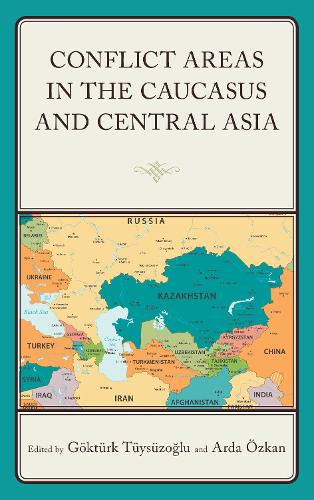
Conflict Areas in the Caucasus and Central Asia
(Hardback)
Publishing Details
Conflict Areas in the Caucasus and Central Asia
By (Author) Gktrk Tyszolu
Edited by Arda zkan
Contributions by Onur Akaya
Contributions by ebnem Ker Akapar
Contributions by Sanem zer
Contributions by Tolga krk
Contributions by Bezen Balamir Cokun
Contributions by Fatih Gide
Contributions by Torul smayl
Contributions by Levent Kirval
Bloomsbury Publishing PLC
Lexington Books
25th January 2022
United States
Classifications
Professional and Scholarly
Non Fiction
Warfare and defence
Geopolitics
950.42
Physical Properties
Hardback
468
Width 162mm, Height 227mm, Spine 31mm
812g
Description
The Caucasus region and Central Asia covers a large part of the Eurasian. Both regions, where Russia and China have a serious influence and visibility, also have a location that reflects the hegemonic expectations of both these actors. In this context, domestic political developments and even internal conflicts in the region can be linked to the policies of Russia and China to a certain extent and have the potential to affect the motives of these two powers. Although Central Asia is rich in natural resources, it is landlocked and has lagged other nations in terms of agricultural production and industrial development. Although the Caucasus is divided into the North, the territory of Russia, and the South, where three independent states are located, it is insufficient in terms of production and development. The Caucasus stands out especially with energy projects and its feature of being a commercial corridor.
Reviews
This is one of the most comprehensive books written on the regions of Caucasus and Central Asia in the area of International Relations. It provides a thorough analysis of the salient issues, frozen conflicts, and important actors in the region. The fact that the book also has elaborate articles on the important topics of the Zeitgeist, such as energy, climate change and gender must also be appreciated.
-- Birgl Demirta, Turkish-German UniversityAuthor Bio
Gktrk Tyszolu is associate professor at Giresun University department of international relations.
Arda zkan is assistant professor at the department of international trade and logistics, Faculty of Applied Sciences of Ankara University.
